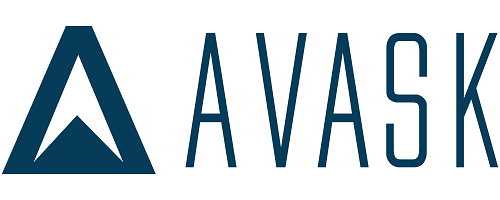An Official Statistics release. Published 17 November 2022.
1. What is the VAT Gap?
The VAT gap is measured by comparing the net VAT total theoretical liability (VTTL) with actual receipts (this is comparing the amount of VAT HMRC expects to receive and the VAT HMRC actually receives). The VAT gap methodology uses a ‘top-down’ approach.
2. Preliminary estimate of the VAT gap for tax year 2021 to 2022
The table below shows the headline figures used to produce the preliminary VAT gap estimate for tax year 2021 to 2022.
| Financial year | Net VAT total theoretical liability | HMRC net VAT receipts | Net VAT receipts related to net VAT total theoretical liability in 2021 to 2022 | VAT gap (point estimate) | VAT gap (per cent) |
|---|---|---|---|---|---|
| 2021 to 2022 | £143.8 billion | £157.3 billion | £133.9 billion | £10.0 billion | 6.9 |
The amounts calculated are rounded to the nearest £0.1 billion and the VAT gap as a percentage has been rounded to the nearest 0.1 per cent. Net VTTL and net VAT receipts are expressed net of payments and repayments. A portion of the VTTL estimate is projected rather than actual expenditure.
The 2021 to 2022 net receipts figure in the VAT gap model includes an adjustment to remove the impact of the payments in this year that related to deferred VAT between March 2020 and June 2020 under the ‘VAT payments deferral scheme’ – a key fiscal support measure in the government’s response to COVID-19.
This follows previous adjustments to net receipts for the years 2019 to 2020 and 2020 to 2021 to capture the VAT payments deferred in 2020 in relation to when the liability arose. This means the net receipts figure for those years were adjusted to ensure that all payments – those already received and those expected to be paid – in respect of the liabilities related to 2019 to 2020 and 2020 to 2021 were properly captured for those years in the VAT gap estimates.
Due to the introduction of the ‘VAT deferral new payment scheme’, which enabled customers who still had unpaid deferred VAT at the end of March 2021 the opportunity in 2021 to 2022 to repay this in up to 11 equal instalments depending on when the customer joined the scheme, the adjustment to net receipts in 2021 to 2022 ensures there is no double counting as the payment of VAT deferrals has been already accounted for in respect of the liabilities they related to in the previous years (2019 to 2020 and 2020 to 2021).
The 2021 to 2022 estimate also includes an update for the reduced rates measure in the hospitality sector, holiday accommodation and attractions sectors.
Because of the need for adjustments to allow for the impact of the VAT deferral scheme(s) and other costings, it should be noted that the VAT gap estimate is subject to more uncertainty than usual and therefore should be treated with extra caution.
The first estimate of the VAT gap for 2021 to 2022 at 6.9% (£10.0 billion) shows a slight reduction in percentage terms compared with the estimate of the VAT gap for 2020 to 2021 of 7.0% (£9.0 billion) published in ‘Measuring tax gaps 2022 edition’.
3. Details of HMRC’s VAT gap publications
HMRC publishes 3 estimates of the 2021 to 2022 VAT gap: the first in the autumn 2022, the second at spring 2023, and the third as part of HMRC’s ‘Measuring tax gaps’ publication in 2023. Details are given in the table below.
| Name | Release date | Details |
|---|---|---|
| Preliminary VAT gap estimate (for 2021 to 2022) | Autumn 2022 | Based on known VAT receipts and a full year of consumer household expenditure data – which accounts for around 70% of the VTTL. The remaining 30% of the VTTL is comprised of government and housing expenditure data, and businesses making exempt supplies, which uses Blue Book 2021 data and a forecast using assumptions produced by the Office for Budget Responsibility (OBR). |
| Second VAT gap estimate (for 2021 to 2022) | Spring 2023 | Includes further updates of data for example ONS (Office for National Statistics) Consumer Trends (household data). Also updated with the latest Blue Book 2022 back series data but continues to forecast the 30% of the 2021 to 2022 VTTL with the latest OBR forecasting assumptions. |
| Third VAT gap estimate (for 2021 to 2022) | Summer 2023 | Expected to include further updates, such as ONS Consumer Trends data. Will be published in Chapter 2 of the ‘Measuring tax gaps 2023 edition’ publication in Summer 2023 along with the latest historical time series. |
For details on assumptions provided by the OBR, go to OBR publications. For details on Blue Book data go to ‘UK National Accounts, The Blue Book time series’. For details on the Consumer Trends data go to ‘Consumer trends time series’
For details on the ‘Measuring tax gaps’ publication, go to Measuring tax gaps.
4. Data used for HMRC’s VAT gap publications
The preliminary estimate of the VAT gap for 2021 to 2022 has been published following the Autumn Statement 2022 and it includes the latest ONS Consumer Trends data up to and including 2022 quarter 1. It also included the ONS National Accounts Blue Book 2021 non-household expenditure data.
The second VAT gap estimate for 2021 to 2022 will be published at Spring 2023 and includes further updates of data, for example ONS Consumer Trends Q2 2022 (household data), ONS Consumer Trends Q3 (household data) and ONS Blue Book 2022.
The third VAT gap estimate for 2021 to 2022 will be published along with an updated historical time series as part of the ‘Measuring tax gaps 2023 edition’ publication in Summer 2023.
Due to timing the ‘Measuring tax gaps 2023 edition’ publication will not include the Blue Book 2023 data, therefore 30% of the 2021 to 2022 estimate will remain forecasted until the publication of ‘Measuring tax gaps 2024 edition’
5. Revisions policy
HMRC’s policy is to only publish a revised historical VAT gap series once a year, within the ‘Measuring tax gaps’ publication, incorporating both new and revised data and methodological improvements together.
6. Methodology
Further information on the methodology used to estimate the VAT gap can be found in ‘Measuring tax gaps 2022 edition – Methodological annex’, Chapter D
Source: gov.uk















